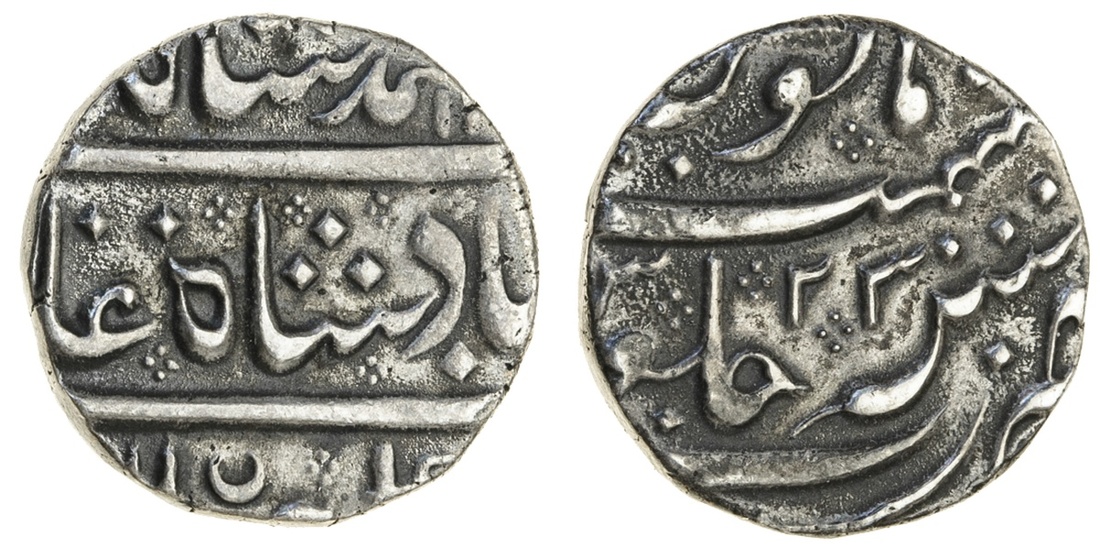
Auction: 18006 - Ancient, Indian and Islamic, British and Foreign Coins and Commemorative Medals
Lot: 1401
India, French India, in the name of Muhammad Shah (1719-48), Rupee, 10.98g, 'Arcot' mint for Pondicherry (probably struck at Alamparai), ry.23, crescent on bottom line of obverse legend (Brockmeier, JONS 194, pp.34-36), extremely rare with this early date and with crescent in this position, toned good very fine
Although Arcot Rupees get their name from the original seat of the Nawabs of Arcot in South India, and always bear the mint name 'Arcot,' they were struck at many different places. This is because they became accepted currency across a wide area.
It is well known that the French struck Arcot Rupees at Pondicherry and that their issues are characterised by a crescent by the date. More recently it was noticed that the particular form of the word julus found on Pondicherry Rupees is also present on other Arcot Rupees (Jan Lingen, 'Rupees with the Mint name Arkat,' Seaby Coin & Medal Bulletin, January 1980).
Taking this a step further, Brockmeier researched the history of the country mint Alamparai (Alamparve) just north of Pondicherry. It is known the Nawabs sent bullion to be minted here from 1739. The diary of Ananda Rangam Pillai, a merchant based in Pondicherry at the time, mentions the charter of 1736 authorising the French to strike Rupees at Pondicherry. Ananda Rangam Pillai notes that the new coin dies were sent from Alamparai with the charter, and were greeted with a great fanfare, which extended to a 21-gun salute on land and similar celebrations aboard the three ships moored in the harbour. He also records that the the French governor was instructed to run the mint the same way as at Alamparai by the chief Dubash and representative of the Arcot Nawab, who allocated a die cutter from Alamparai to the new mint.
From this account Brockmeier concluded that early Rupees struck at Pondicherry would share the same legend peculiarities with contemporaneous issues of Alamparai.
Although Ananda Rangam Pillai writes that over 2000 Rupees were struck in Pondicherry in 1736, none of these, equating to year 19 of Muhammad Shah, are known today. However Cariou (La monnaie de l'Inde Francais, Monnaies d'Asie, no.8, Societe de Numismatique Asiatique, 2018, p. 83), lists a coin of ry. 23 with crescent by date among the earliest issues of Pondicherry mint. It is likely that the two mints operated in tandem for several years, at least until 1740/1, when this Rupee was stuck.
As mentioned above, several Rupees bearing the characteristic script linked to the mints of Pondicherry and Alamparai are know, but usually the bottom line of the reverse legend is partially off the flan, so it cannot be seen if all Rupees of this type bear a similar reverse crescent. Therefore it is impossible to say for certain if it was a characteristic of Rupees struck at Alamparai mint in general or just used on coins intended for the small French establishment there.
What can be said is that these Rupees are extremely rare with only one other being recorded with the regnal year 23 and the crescent in the bottom line. This is in the ANS collection in New York.
Subject to 20% VAT on Buyer’s Premium. For more information please view Terms and Conditions for Buyers.
Estimate
£800 to £1,000




